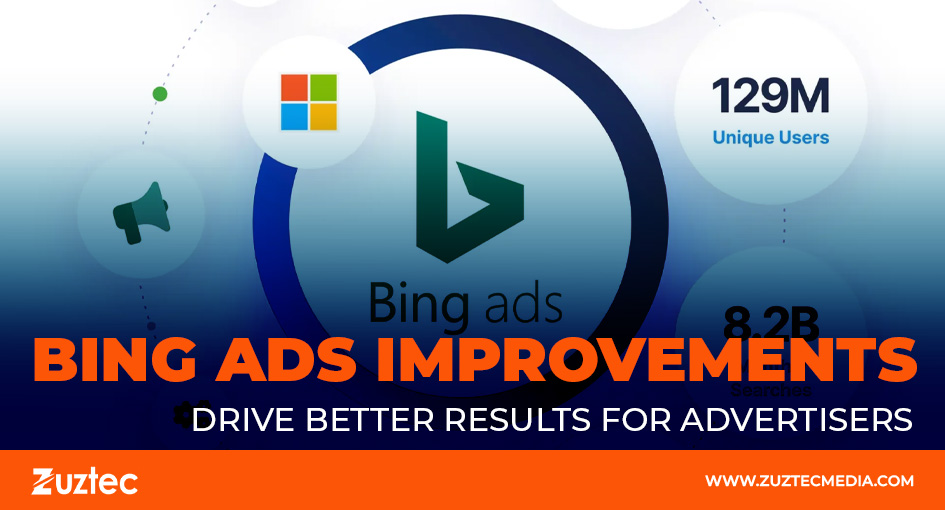
Bing Ads Improvements Drive Better Results For Advertisers
In the rapidly evolving world of digital advertising, search engine platforms continue to compete by offering improved tools, targeting features, and performance enhancements. Bing Ads, now known as Microsoft Advertising, has steadily grown into a powerful alternative to Google Ads. Thanks to ongoing bing ads improvements, marketers now have access to more advanced capabilities that can increase their reach and maximize return on investment.
With a user base that spans both desktop and mobile environments and a growing partnership network across Yahoo, AOL, and other platforms, Bing’s reach is broader than many realize. Microsoft’s consistent updates are focused on helping advertisers simplify campaign management, improve targeting, and gain deeper insights through better analytics.
In 2025, Microsoft Advertising has introduced various features such as AI-based automation, enhanced responsive ad formats, and stronger integrations with LinkedIn and Dynamics 365. These upgrades are designed to support campaign scalability and reduce the manual workload for advertisers.
Understanding and leveraging these recent improvements can help businesses tap into new audiences, reduce advertising costs, and achieve more consistent performance. This article explores the key changes shaping Bing Ads in 2025, how these updates impact advertising strategies, and why advertisers should take a closer look at Microsoft’s growing ad ecosystem.
Latest Bing Ads Improvements That Matter
Bing Advertisements improvements in 2025 are focused on automation, audience targeting, and platform integration. One of the most notable updates is the use of Microsoft’s AI engine to automatically optimize bidding strategies. Instead of relying on fixed bids or manual adjustments, advertisers can now let AI determine the best bid for each auction based on predicted user behavior and conversion likelihood.
Another major feature is the expansion of multimedia ads. These allow brands to use rich visuals, headlines, and descriptions in carousel formats that appear across the Bing search network. This creative flexibility not only captures attention but also improves engagement rates, especially for mobile users.
Microsoft has also introduced better integration with LinkedIn’s profile-based targeting. The ability to combine intent-based search targeting with demographic filters gives advertisers more precision. Campaign management has become more efficient, too.
How New Tools Simplify Campaign Execution
Beyond targeting and bidding, Bing Ads now makes it easier to launch and manage campaigns with less friction. For example, advertisers can import campaigns directly from Google Ads and retain nearly all the structure, saving time during setup. Improved recommendations based on AI insights also offer real-time suggestions to improve performance, from keyword ideas to ad copy changes.
Marketers can also take advantage of enhanced conversion tracking that uses Microsoft Clarity, a free tool that provides heatmaps and user session recordings. This level of visibility helps advertisers better understand user interaction beyond simple clicks or conversions.
A notable midbody change includes the rollout of AI-powered search term suggestions. These automatically expand keyword lists based on high-performing search trends, allowing campaigns to stay relevant and reach a wider audience. This is one of the most practical Bing Ads improvements for advertisers looking to scale quickly.
The updated audience network also supports in-market and custom audiences. These tools allow advertisers to show ads to users based on their interests, behaviors, and purchasing intent, making ads more relevant and impactful.
Benefits For Budget-Conscious Marketers
For advertisers with limited budgets, Bing offers several cost-saving advantages compared to Google. Thanks to lower competition on Bing’s platform, cost-per-click (CPC) rates are generally lower, especially in niche or B2B sectors. This means that marketers can achieve similar or better results with smaller investments.
The platform’s AI and automation features also reduce the need for constant manual oversight. With intelligent bidding and real-time adjustments, campaigns can stay optimized without requiring daily intervention. This is particularly beneficial for small teams or solo advertisers who need to maximize efficiency.
Reporting tools have been improved as well, with more customizable dashboards and export options. Advertisers can track key metrics such as conversion rate, quality score, and audience engagement across different placements, helping them fine-tune strategies over time.
Enhanced support for shopping campaigns and dynamic remarketing has made Bing Ads especially valuable for e-commerce brands. These features enable personalized product displays and follow-up ads based on user interaction, driving repeat visits and conversions.
Why Bing Ads Deserve More Attention
Despite being overshadowed by Google, Microsoft Advertising has quietly evolved into a robust advertising platform that offers unique advantages. With continued bing ads improvements, it now supports a wide variety of campaign types, targeting methods, and performance tools that rival larger competitors.
Marketers who embrace these updates can access a less saturated, more cost-effective channel for digital promotion. Whether you’re targeting consumers or businesses, Bing’s improved ad formats, AI capabilities, and integration with Microsoft products create a unified ecosystem that delivers measurable value.
Moreover, Microsoft’s ongoing investment in privacy-first tools ensures that advertisers can track results and personalize content while staying compliant with user data regulations. The platform’s flexibility and transparency make it an appealing option for brands seeking more control and visibility.

